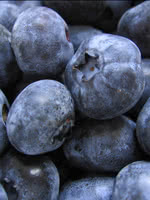Mon-Fri 9am - 5pm Mountain time
Black Elderberry vs Top Hat Blueberry
Sambucus canadensis
Vaccinium x Top Hat
NOT AVAILABLE THIS SEASON - MIGHT RETURN
NOT AVAILABLE THIS SEASON - MIGHT RETURN
Black Elderberry is a deciduous shrub native to eastern North America. You can plant this shrub in moist areas and it will help stabilize your soil. You can also use it on rural properties anywhere you'd use a lilac.
Black Elderberries are considered to be partially self-pollinating. So while they will still produce some berries without cross-pollination, planting with another variety will increase yields. Consider planting with Ranch Elderberry or Bob Gordon Elderberry.
Warning: the seeds, stems, leaves, roots, and uncooked berries of the Black Elderberry are poisonous to humans when eaten in quantity. You should cook the berries to make them safe for human consumption.
Top Hat Blueberry is ideal for decks, patios, and small yards. This compact blueberry produces loads of good tasting berries early in the summer. This variety's berries are well suited for baking.
While Top Hat Blueberry is self-pollinating, we recommend pairing it with another suitable blueberry to increase the berry production of both varieties.
We recommend planting Top Hat Blueberry into the ground or into planters that have at least 5 gallons of soil per plant for the best results. Do not plant them into pots (voids your guarantee).
Note: Blueberries require very specific soil conditions. They need well-drained soil with a pH between 4.5 and 5.0. If the starting pH of your soil is between 5.1 and 6.2 you can lower it by adding sulfur. We recommend against planting blueberries in soil with a starting pH greater than 6.2. Please do your own research before buying any blueberry plants.
Black Elderberry Quick Facts
Top Hat Blueberry Quick Facts
Toxicity: leaves, stems, and uncooked berries are poisonous to humans

